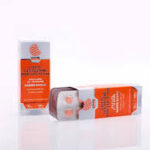Vinyl records have experienced a resurgence in recent years, captivating both seasoned collectors and new enthusiasts. As you delve into the world of vinyl, one common question arises: what is the difference between new and used vinyl records? Understanding these differences is essential for making informed choices about your collection. This guide will explore the characteristics, sound quality, pricing, and collectibility of new versus used vinyl records.
Definition of New Vinyl Records
Characteristics of New Vinyl Records
New vinyl records are those that have never been played and typically come sealed in their original packaging. These records are produced from fresh pressings and are free from wear and tear. When you purchase a new vinyl record, you can expect it to arrive in pristine condition, ready for your turntable.
Types of New Vinyl Records
New vinyl records come in various forms, including:
- Reissues: These are remastered versions of older albums, often released to celebrate anniversaries or to make classic music more accessible.
- First Pressings: These are the original pressings of an album when it was first released. While technically “new,” they may be harder to find as they are often sought after by collectors.
- Limited Editions: Special releases that may include unique artwork, coloured vinyl, or exclusive bonus tracks, making them desirable for collectors.
Definition of Used Vinyl Records
Characteristics of Used Vinyl Records
Used vinyl records have been previously owned and played. They may show signs of wear, such as scratches, dust, or surface noise, depending on how well they were cared for by previous owners. Each used record tells a story and often carries the charm of its history.
Condition Grading
The condition of used vinyl records is crucial in determining their value and playability. Grading systems typically range from Mint (perfect condition) to Poor (significant damage). Here are some common grades:
- Mint (M): Perfect condition, appears unplayed.
- Near Mint (NM): Slightly used but shows no obvious signs of wear.
- Very Good (VG): Moderate wear, may have surface noise but is still playable.
- Good (G): Noticeable wear, surface noise likely, but plays without skipping.
- Fair/Poor: Heavy wear, scratches, or warping; may be unplayable.
Sound Quality Comparison
New Vinyl Records
One of the main advantages of new vinyl records is their potential for superior sound quality. Fresh pressings are often made using high-quality materials, resulting in less surface noise and distortion. Additionally, modern manufacturing techniques can enhance the overall listening experience, especially for audiophiles.
Used Vinyl Records
While used vinyl records can vary significantly in sound quality, many collectors appreciate the unique audio characteristics of vintage recordings. Some used records may exhibit a certain warmth or character that is not present in new pressings. However, it’s essential to assess the condition of a used record before purchase, as scratches and wear can impact playback.
Pricing Differences
Cost of New Vinyl Records
New vinyl records generally fall within a standard price range, usually between $20 and $40 for most albums. Prices can vary based on factors such as pressing quality, exclusivity, and demand. Limited editions or special releases may command higher prices due to their collectible nature.
Cost of Used Vinyl Records
Used vinyl records can vary widely in price, influenced by factors such as condition, rarity, and demand. While you might find a common album for a few dollars, rare or vintage records can fetch hundreds or even thousands of dollars. Scouring thrift stores or online marketplaces can lead to fantastic bargains or unexpected treasures.
Collectibility and Value
New Vinyl Records
New vinyl records can also be collectible, particularly limited editions or reissues of classic albums. Many collectors focus on acquiring these special releases, making them a vital part of modern vinyl culture. The trend of “vinyl hunting” has led to a thriving market for new records.
Used Vinyl Records
Used vinyl records often hold significant sentimental and monetary value. Rare or out-of-print albums can be highly sought after, with collectors willing to pay a premium for a particular piece. The history behind used records adds to their allure, making them more than just music—each one tells a story.
Where to Buy
Purchasing New Vinyl Records
New vinyl records can be found at various retailers, both online and in physical stores. Major music retailers, independent record shops, and online platforms like Bandcamp and Discogs are excellent places to start. Keep an eye out for sales or special promotions to score the best deals.
Purchasing Used Vinyl Records
For used vinyl records, consider exploring thrift stores, flea markets, garage sales, and dedicated record shops. Online marketplaces like eBay, Discogs, and local Facebook groups can also yield great finds. When buying used, always inspect the record’s condition and ask the seller about its history if possible.
Conclusion
Understanding the differences between new and used vinyl records is essential for collectors and music enthusiasts alike. New records offer pristine sound quality and fresh pressings, while used records provide unique audio characteristics and historical value. Whether you choose to invest in new or used vinyl, each record brings something special to your collection. Happy collecting!


